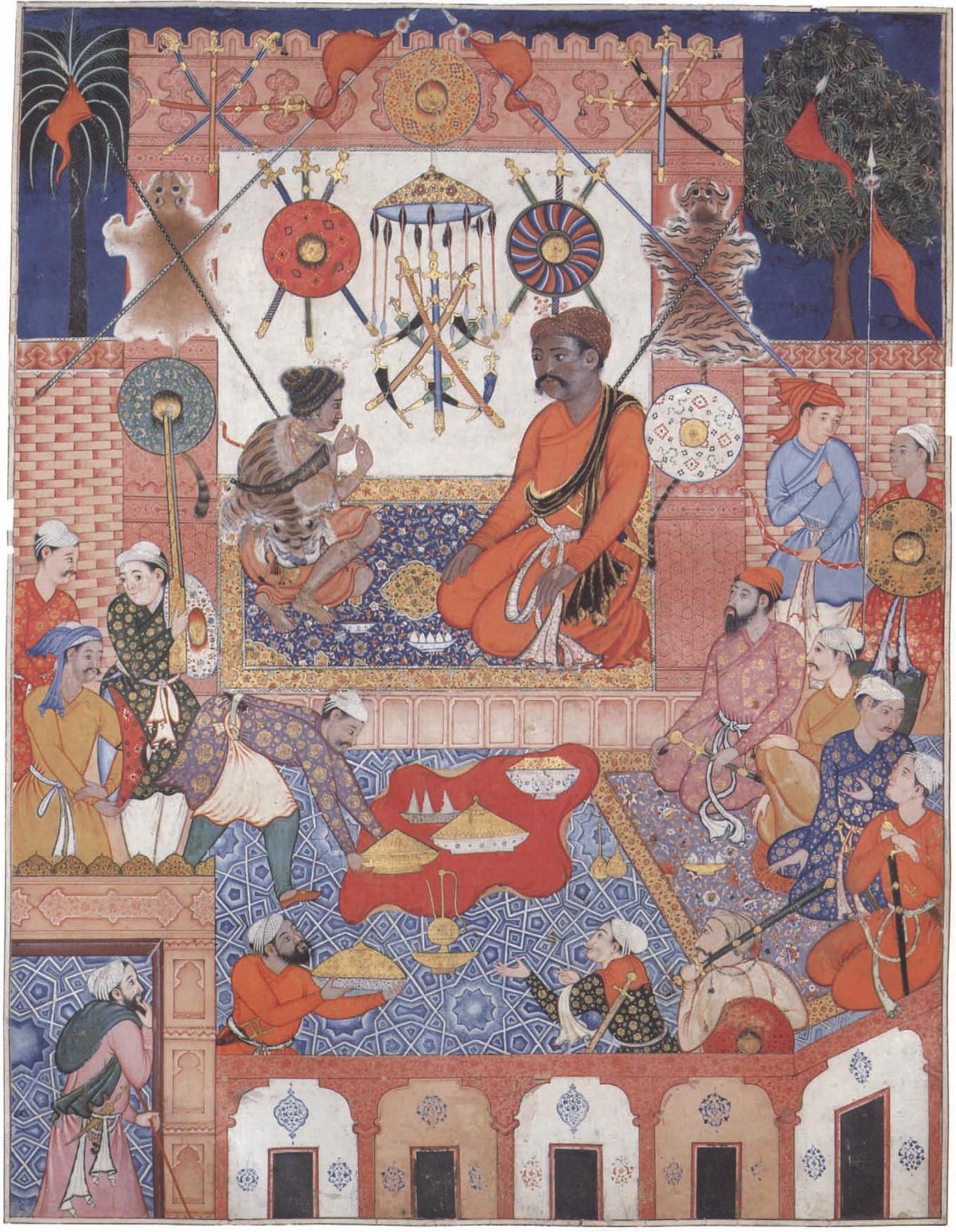
Join Amazon Prime - Watch Thousands of Movies & TV Shows Anytime - Start Free Trial Now
Mesbah the Grocer Brings the Spy Parran to his House
from the Hamza-nama, c.1570, India.



Mesbah the Grocer Brings the Spy Parran to his House
Mughal: period of Akbar (r. 1556-1605), ca. 1570
Page from the dispersed Hamza-nama (Story of Prince Hamza)
Ink, opaque watercolor, and gold on cotton
27⅞ x 21⅝ in. (70.8 x 54.9 cm)
The Metropolitan Museum of Art, New York
Rogers Fund, 1924 (24.48.1)
Reference: Dimand 1948, p. 7, fig. 2
Nothing quite prepares the viewer for the scale and immediacy of illustrations from the Hamza-nama, the earliest product of the great emperor Akbar's atelier. The text describes the mythic adventures of Prince Hamza, uncle of the prophet Muhammad, in his quest to disseminate Islam throughout the world. The large-scale, extraordinarily ambitious manuscript had fourteen hundred illustrations with facing pages of text. It was divided into fourteen volumes and took fourteen years to complete. The design and coloring of every page was overseen by a single artist, but several craftsmen worked on each illustration. Although influenced by the style of Persian paintings, these images differ in having a principal narrative element that dominates the scene and a composition that reinforces the pictures dramatic intent.
In Mesbah the Grocer Brings the Spy Parran to His House, the tiled floors and walls, carpets, hanging armor, and largely frontal architecture are all contained decoratively in a symmetrical composition parallel to the picture plane. The space is opened up, however, by the clarity and solidity of the figures, which have weight and depth and which overlap one another, by the diagonal of the carpet border, and by the implied sight lines of the participants as they look through and out of the space. There is no question that amidst the decorative complexity, at the center of the action, is a psychological drama. Both main figures are brilliantly characterized, the furtive spy with his contorted posture and animated hands and the massive, still grocer, by far the largest person in the painting, glancing suspiciously toward his guest.
Source: pp.32-33, Indian Court Painting, 16th-19th Century by Steven Kossak
via Metropolitan Museum of Art, New York